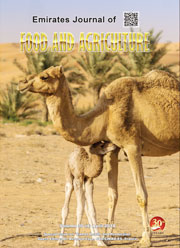SEEDLING DATE PALMS (PHOENIX DACTYLIFERA L.) AS GENETIC RESOURCES
DOI:
https://doi.org/10.9755/ejfa.v25i11.16497Keywords:
Artificial ripening, Cultivar, Ethnovariety, Germplasm, Khalt, Mexico, Offshoot, Peru, Spain, USAAbstract
An accelerating worldwide trend toward planting elite cultivars is leading to genetic erosion and a narrowing of the gene pool upon which the date-palm industry is based. Large numbers of seedling dates are known in many major date-growing countries, as well as in naturalized populations in Spain and the Americas where the palm was intentionally introduced. Seedling dates growing under different climatic conditions from those of the major production areas represent potential genetic resources that should be evaluated for desirable traits. Utilizing modern biotechnology, traits such as disease and pest resistance, hardiness, tolerance of salty soils and improved fruit quality and quantity potentially can be transferred to elite cultivars to sustain and further improve fruit production. Specific examples of important seedling date palm populations in Spain, Peru and Mexico are discussed, as well as new cultivars derived from seedlings in the United States. Research on seedling date populations is recommended, along with the establishment of ex situ germplasm collections of promising specimens as living plants, cold storage of seeds or cryopreservation.










 .
. 